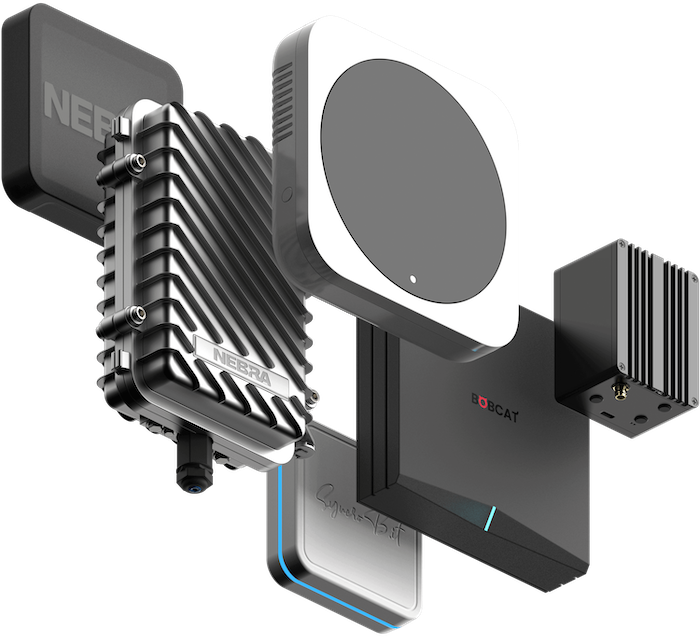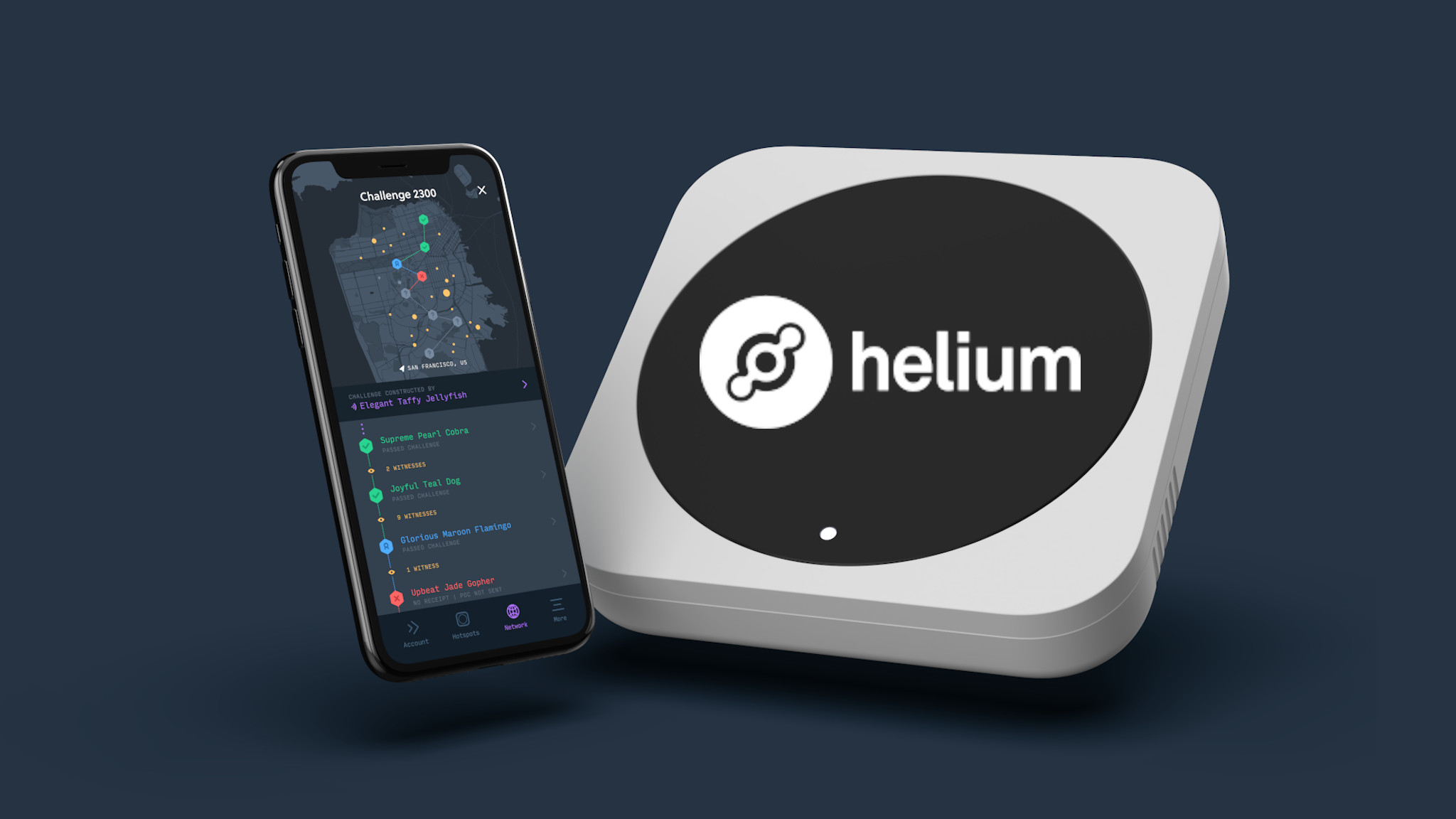The helium miner, is a wireless device known as a hotspot, uses radio technologies for HNT minting. It rewards HNT tokens for offering coverage.
Mining assists in validating the legitimacy of transactions executed through a blockchain network like the Bitcoin blockchain. Miners can begin mining cryptos using hardware like a central processing unit (CPU) or some application-specific integrated circuits (ASICs). On the other hand, they can use smartphones that are powered by iOS and Android systems to mine the cryptos of their choice.
How about mining cryptos through a decentralized wireless network? As strange as this sounds, it is now possible for miners to mine cryptos without having to rely on expensive equipment or infrastructure. Helium Network has now made it possible by enabling nodes to work as hotspot devices.
What Is The Helium Network?
Helium is a widespread network of hotspots designed to offer LoRaWAN-capable Internet of Things (IoT) devices, making up a long-range wireless service that is publicly and readily accessible by users globally. LoRaWAN is an acronym for Long Range Wide Area Network. Hence, IoT devices may communicate with each other through LoRa powered by the open LoRaWAN protocol.
IoT devices are described as smart ‘gadgets’ that link to a network and exchange data, providing a more exhaustive range of connectivity than Wi-Fi.
Notably, the Helium blockchain was created exclusively to encourage the development of real and decentralized wireless networks. With Helium, anybody can own and manage a wireless IoT network using a distinct, portable radio router called a hotspot. Interestingly, hotspots are wireless plug-and-play devices that provide enhanced connectivity that is better than Wi-Fi.
Hotspots are primarily used by the miners to construct The People’s Network, a long-range wireless network that offers coverage for IoT devices with minimal power needs in exchange for the Helium (HNT) token, the Helium blockchain’s native crypto. In that context, the Helium Community has authorized third-party manufacturers to sell a wide range of Helium Hotspots.
Related: Helium Offers Real-World Uses Case For Crypto In 2022
Proof-of-coverage (PoC) is a novel work algorithm that is utilized by the Helium blockchain to confirm that all hotspots accurately and efficiently describe their location and the wireless network coverage they are getting from it.
Radio waves are mostly used during the mining process and hotspots are then rewarded for working as witnesses for peers’ performance, resolving proof of coverage challenges, and sharing device data. The most valuable tool for viewing all data linked to POC is the Helium Network Explorer.
However, why would anybody go for the Helium Network instead of other standard internet service providers? The probable reasons include Helium being entirely encrypted, high levels of security, and affordable universal internet access.
Furthermore, users do not have to bear charges that other cellular providers may impose, including coverage fees or costs of extra hardware like a SIM card. With that in mind, users just pay for the data that they used to link their devices using the Helium Console to start using the Helium Network.
What Is A Helium Miner?
Using specialized hardware referred to as hotspots, the Helium miners provide the Helium network with wireless coverage. By acquiring or creating a WHIP-compliant hotspot and staking a token deposit that corresponds to the destiny of other miners working in their region, users become miners on the Helium network.
Apart from the blockchain protocol, the Helium Wireless protocol known as WHIP, a network of independent service providers instead of a single coordinator, provides a bi-directional data transfer method between the wireless devices and the internet.
The task of validating to hotspots that device data was sent to the expected location and that the miner needs to get compensated for their services depends on internet applications that purchase encrypted device data from the miners called routers.
There are three types of hotspots. They include:
- Full hotspots – these kinds of hotspots maintain an entire copy of the HNT blockchain and get rewards for all participation activities, including proof-of-coverage.
- Light hotspots – with the help of the Light Hotspot software, the hotspots use validators to participate as full hotspots without having to incur any extra costs of storing a local copy of the blockchain. Furthermore, they get rewarded for proof-of-coverage and data transfer activities.
- Data-only hotspots – as is the case with the light hotspots, the data-only hotspots utilize validators to collect information about the Helium blockchain. Nonetheless, they get rewarded for data transfer activities only.
How Does Helium Mining Operate?
Radio wave technology is used to conduct Helium mining instead of CPUs and ASICs. Furthermore, blockchain technology is used in the development of a wireless network that is highly reliable than the network offered by established traditional wireless service providers.
Helium hotspots and miners offer long-range wireless coverage using some special devices known as LoRaWAN transmitters. So, how do you earn Helium tokens in return? By mining and expanding The People’s Network’s coverage with suitable and sustainable hotspots, miners gain HNT.
Related: Don’t Know What Bitcoin Mining Is? Here is a Complete Guide
In that context, the reward amount is mainly correlated with the data that a miner will transfer, translating to more money when the miners manage to transfer more device data.
Furthermore, the network automatically and randomly assigns proof-of-coverage tests to validate the location of hotspots. These hotspots get directives and ‘challenges’ from the validators to communicate payloads to any of the nearby hotspots for observation and validation to participate in PoC.
These challenges are also known as ‘beacons.’ Nevertheless, since they can only mine HNT for data transfer and cannot have their beacons confirmed, HNT hotspot miners without any neighbors are paid less.
Notably, every compatible device requires data credits (DCs) to send data to the internet. DCs are developed by burning HNT to achieve a burn and mint equilibrium (BME), which minimizes the total supply of HNT. The BME model utilizes tokens as a proprietary form of payment, but clients who want to utilize a service do not directly pay any counterparty. Instead, they burn these tokens.
How To Set Up A Helium Miner
A hotspot miner, cables, antenna (and its location), smartphone, and router are the prerequisites to set up a Helium miner. But how do you construct the best Helium miner? The position of the antennas and the user’s geographical location play an integral role in finding a suitable Helium miner. These steps give an understanding of how one can set up a Helium miner:
Download And Set Up A Helium App
The first step in this process involves downloading a Helium app and setting up an account. The app is available for both iOS and Android devices. After that, a Helium wallet is generated that the users can use to store their information.
This application then generates a 12-word seed phrase to help back up the Helium wallet. Notably, the app also prompts the user to create a six-digit pin that has to be entered every time the account owner logs in as an extra security measure.
Related: How To Secure Your Crypto Wallet Against Hacks
Include A Helium Miner
The next step in the process is to look for the plus (+) symbol to add a Helium miner, for instance, the RAK Hotspot Miner, to the app. The selected miner has to be plugged in to operate and a small red light confirms that it is working properly.
Then, press a button located on the back of the device for Bluetooth pairing. On the other hand, configure Wi-Fi by selecting the viable option from the available network settings within the Helium app.
Choose The Hotspot, Determine Its Location And Set Up The Antenna
At this point, the list includes the selected Hotspot Miner. To proceed, choose ‘Hotspot.’ A command/prompt to add a hotspot then appears. Add the Hotspot, validate its location, and configure the antenna.
Notably, the first assertion is free since it is paid for by manufacturers. Users are responsible for paying the transaction fee for additional assertions. Press ‘Skip’ in case you still need to prepare to set a location. When you are ready to continue, choose ‘Continue.’ The additional Hotspot can be viewed and managed under the Hotspots tab of the mobile application.
Is Mining Helium Worthwhile?
There are no definite promises in the crypto space, due to its volatility. Helium hotspots are perfectly designed to prove coverage challenges with the other nearby hotspots, execute device data transfer, and send strong signals to set up a decentralized wireless network.
However, how much do Helium miners make in return? The participating miners gain data credits that come in the form of HNT tokens for completing their tasks successfully.
Related: Titan CEO Ryan Condron Talks About The Future Of Crypto Mining
Nonetheless, these HNT rewards depend on the angle of the antenna and one’s geographical location. With that said, the higher you set your antennas, the further the radio frequency will eventually travel. As a result, you can readily mine more efficiently and get paid more HNT in case you can mount your antennas higher.
On the flip side, Helium mining might not produce the desired results within a hilly region because of weak signals. Furthermore, always do background checks about projects that you would wish to invest in. This strategy helps you to protect yourself from unprecedented and unbearable losses.







